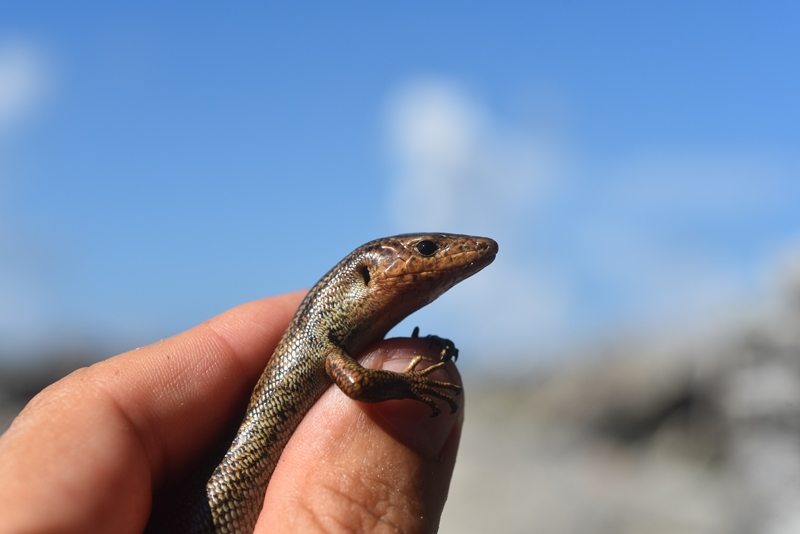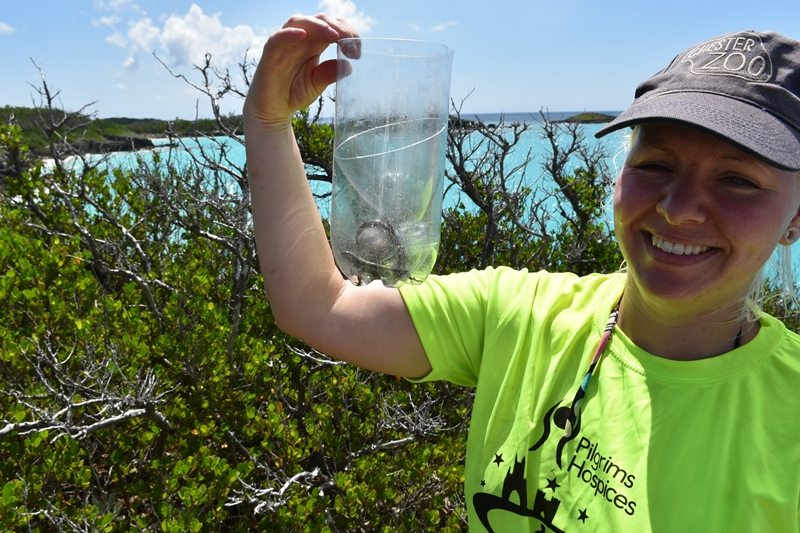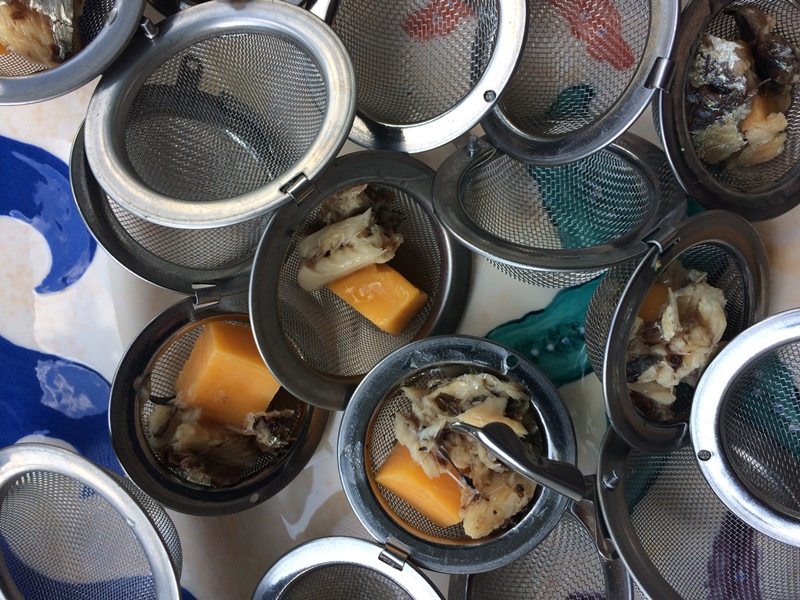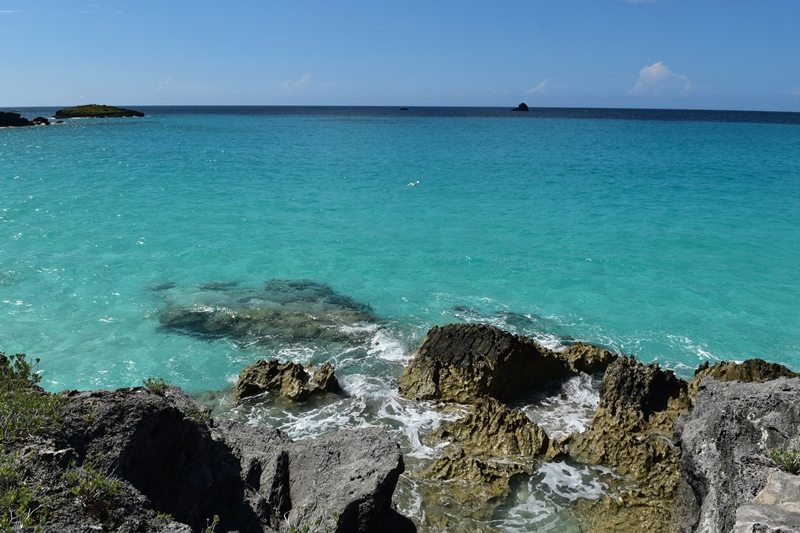Together with the Government of Bermuda’s Department of Conservation Services and Manchester Metropolitan University, we’ve been working with Heléna to study the Bermuda skink as part of her PhD in Biodiversity Management at The University of Kent.
“I’m looking at the conservation and population status of the critically endangered Bermuda skink. There is estimated to be only 2,500 remaining in the world and their population has been in continual decline since 1965.
“The species is listed as critically endangered by the IUCN Red List and faces multiple threats on Bermuda due to several deliberate and accidental introductions of species such as rats, cats, crows, cane toads, chickens, various species of anoles, geckos, kiskadees and yellow crowned night herons. Coastal developments, invasive plants and natural disasters are other factors impacting the species and causing habitat fragmentation and destruction.
Not much is actually known about their ecology making Heléna’s work crucial to develop a better understanding of this endemic lizard species.

“Another major factor is litter being improperly discarded and washed up as marine trash in the skinks habitat. Empty bottles act as lethal traps for small insects such as woodlice or cockroaches that are attracted by the sugary fluid left inside, which in turn attracts the skinks. As the skinks have clawed feet they can’t escape and quickly die of heat exhaustion.”
The research Heléna is currently conducting is vital to find out where the skinks remain on the different islands of Bermuda but also to assess how many individuals are left in the wild and what the main threats to the species are. This information is crucial to create a plan of action for the future.
For the past few weeks, Heléna has been carrying out field surveys at four different sub-populations: Castle Island, Nonsuch Island, Southampton Island, and Spittal Pond. Taking a boat and accompanied by a team of researchers, she goes to the field sites and set up large glass jars filled with rotten sardines and cheese to attract the skinks.

She tells us more:
“I normally use 20 to 80 traps which are checked hourly during a five hour period and take genetic and faecal samples and morphometric measurements for all the individuals we manage to attract. The traps are placed 5 to 20 meters apart as skinks are thought to have a very small home range of around 10 metres. Other information such as the individuals’ stage of life, gender and missing digits or other mutilations are also recorded as they give precious information on the ecology of the species and can indicate high predation in the area.”


So far, Heléna has some interesting preliminary results indicating that skinks have not been entirely isolated on these offshore islands. It seems that some individuals living in rock crevices fall into the sea with bits of vegetation during storms and hurricanes and then drift to the next island increasing the gene flow between these vulnerable sub-populations.
Not only is this project looking at how Bermuda skinks are doing in Bermuda but it is also closely related to the work carried out at Chester Zoo. Heléna explains:
At the moment, the conservation breeding at Chester Zoo aims to improve the husbandry of Bermuda skinks for an eventual conservation breeding programme. However, once I find out where the skinks are absent or declining on the island and why, in the near future we could be reintroducing skinks back to historic sites in the wild therefore both the PhD and breeding programme are complementary elements.